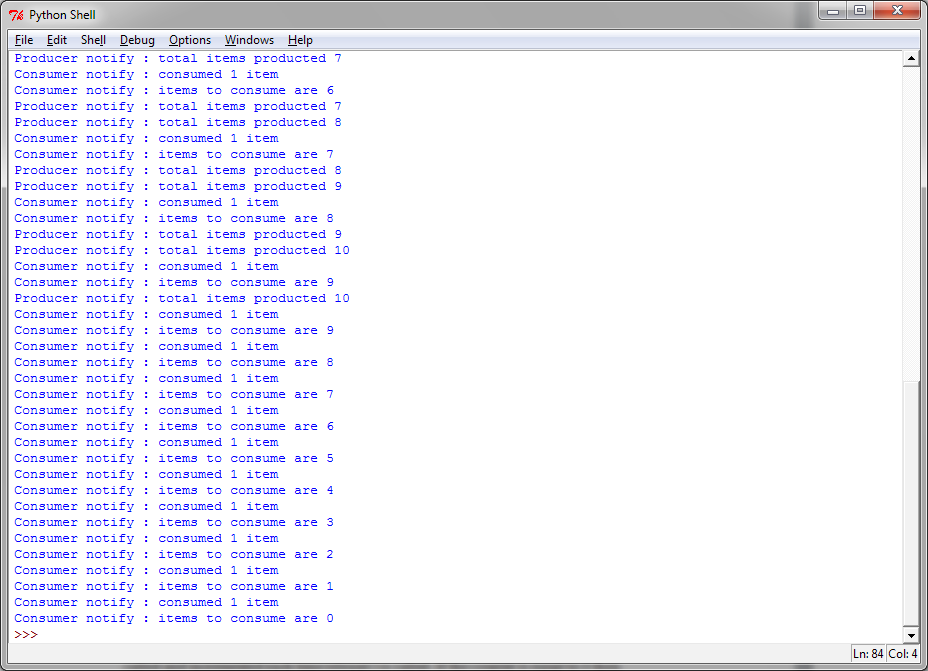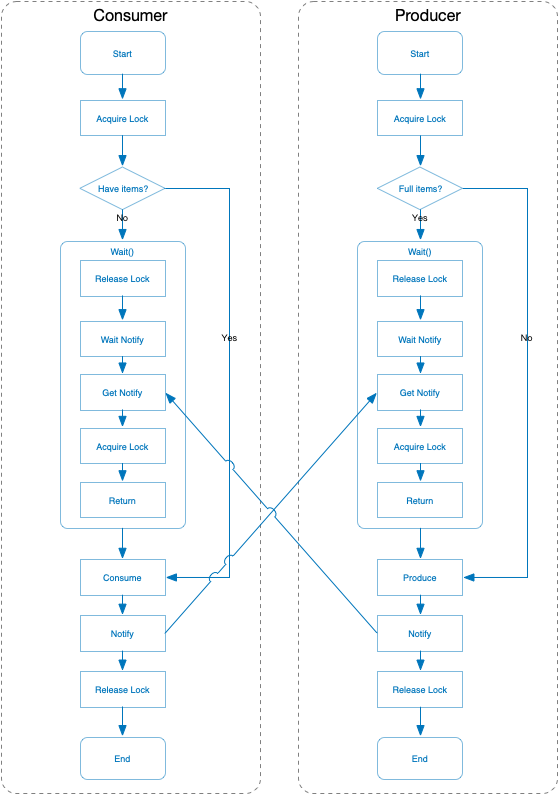Python并行编程
- 本书说明
- 1 认识并行计算和Python
- 1.1 介绍
- 1.2 并行计算的内存架构
- 1.3 内存管理
- 1.4 并行编程模型
- 1.5 如何设计一个并行程序
- 1.6 如何评估并行程序的性能
- 1.7 介绍Python
- 1.8 并行世界的Python
- 1.9 介绍线程和进程
- 1.10 开始在Python中使用进程
- 1.11 开始在Python中使用线程
- 2 基于线程的并行
- 2.1 介绍
- 2.2 使用Python的线程模块
- 2.3 如何定义一个线程
- 2.4 如何确定当前的线程
- 2.5 如何实现一个线程
- 2.6 使用Lock进行线程同步
- 2.7 使用RLock进行线程同步
- 2.8 使用信号量进行线程同步
- 2.9 使用条件进行线程同步
- 2.10 使用事件进行线程同步
- 2.11 使用with语法
- 2.12 使用 queue 进行线程通信
- 2.13 评估多线程应用的性能
- 3 基于进程的并行
- 3.1 介绍
- 3.2 如何产生一个进程
- 3.3 如何为一个进程命名
- 3.4 如何在后台运行一个进程
- 3.5 如何杀掉一个进程
- 3.6 如何在子类中使用进程
- 3.7 如何在进程之间交换对象
- 3.8 进程如何同步
- 3.9 如何在进程之间管理状态
- 3.10 如何使用进程池
- 3.11 使用Python的mpi4py模块
- 3.12 点对点通讯
- 3.13 避免死锁问题
- 3.14 集体通讯:使用broadcast通讯
- 3.15 集体通讯:使用scatter通讯
- 3.16 集体通讯:使用gather通讯
- 3.17 使用Alltoall通讯
- 3.18 简化操作
- 3.19 如何优化通讯
- 4 异步编程
- 4.1 介绍
- 4.2 使用Python的 concurrent.futures 模块
- 4.3 使用Asyncio管理事件循环
- 4.4 使用Asyncio管理协程
- 4.5 使用Asyncio控制任务
- 4.6 使用Asyncio和Futures
- 5 分布式Python编程
- 5.1 介绍
- 5.2 使用Celery实现分布式任务
- 5.3 如何使用Celery创建任务
- 5.4 使用SCOOP进行科学计算
- 5.5 通过 SCOOP 使用 map 函数
- 5.6 使用Pyro4进行远程方法调用
- 5.7 使用 Pyro4 链接对象
- 5.8 使用Pyro4部署客户端-服务器应用
- 5.9 PyCSP和通信顺序进程
- 5.10 使用Disco进行MapReduce
- 5.11 使用RPyC远程调用
- 6 Python GPU编程
使用条件进行线程同步
条件指的是应用程序状态的改变。这是另一种同步机制,其中某些线程在等待某一条件发生,其他的线程会在该条件发生的时候进行通知。一旦条件发生,线程会拿到共享资源的唯一权限。
准备工作
解释条件机制最好的例子还是生产者-消费者问题。在本例中,只要缓存不满,生产者一直向缓存生产;只要缓存不空,消费者一直从缓存取出(之后销毁)。当缓冲队列不为空的时候,生产者将通知消费者;当缓冲队列不满的时候,消费者将通知生产者。
如何做
为了演示条件机制,我们将再一次使用生产者-消费者的例子: :
from threading import Thread, Condition
import time
items = []
condition = Condition()
class consumer(Thread):
def __init__(self):
Thread.__init__(self)
def consume(self):
global condition
global items
condition.acquire()
if len(items) == 0:
condition.wait()
print("Consumer notify : no item to consume")
items.pop()
print("Consumer notify : consumed 1 item")
print("Consumer notify : items to consume are " + str(len(items)))
condition.notify()
condition.release()
def run(self):
for i in range(0, 20):
time.sleep(2)
self.consume()
class producer(Thread):
def __init__(self):
Thread.__init__(self)
def produce(self):
global condition
global items
condition.acquire()
if len(items) == 10:
condition.wait()
print("Producer notify : items producted are " + str(len(items)))
print("Producer notify : stop the production!!")
items.append(1)
print("Producer notify : total items producted " + str(len(items)))
condition.notify()
condition.release()
def run(self):
for i in range(0, 20):
time.sleep(1)
self.produce()
if __name__ == "__main__":
producer = producer()
consumer = consumer()
producer.start()
consumer.start()
producer.join()
consumer.join()运行的结果如下:

讨论
(译者在这里添加一段。乍一看这段代码好像会死锁,因为
condition.acquire() 之后就在 .wait() 了,好像会一直持有锁。其实
.wait() 会将锁释放,然后等待其他线程 .notify()
之后会重新尝试获得锁。但是要注意 .notify()
并不会自动释放锁,所以代码中有两行,先 .notify() 然后再 .release()
。
译者画了一张图,方便大家理解。这里的过程应该是这样子的(注意 wait()
里面实际有一个释放锁重新获得锁的过程):

译者的私货完毕,建议看一下官方文档: https://docs.python.org/3/library/threading.html )
消费者通过拿到锁来修改共享的资源 items[] : :
condition.acquire()如果list的长度为0,那么消费者就进入等待状态: :
if len(items) == 0:
condition.wait()否则就通过 pop 操作消费一个item: :
items.pop()然后,消费者的状态被通知给生产者,同时共享资源释放: :
condition.notify()
condition.release()| 生产者拿到共享资源,然后确认缓冲队列是否已满(在我们的这个例子中,最大可以存放10个item),如果已经满了,那么生产者进入等待状态,直到被唤醒: |
|---|
condition.acquire()
if len(items) == 10:
condition.wait()如果队列没有满,就生产1个item,通知状态并释放资源: :
condition.notify()
condition.release()了解更多
Python对条件同步的实现很有趣。如果没有已经存在的锁传给构造器的话,内部的
_Condition 会创建一个 RLock() 对象。同时,这个RLock也会通过
acquire() 和 release() 管理: :
class _Condition(_Verbose):
def __init__(self, lock=None, verbose=None):
_Verbose.__init__(self, verbose)
if lock is None:
lock = RLock()
self.__lock = lock(以下又是笔者的私货,最近看到一道面试题是这样的,开3个线程按照顺序打印ABC 10次。正好是 Condition 的使用场景。我把我写的代码贴在这里供大家参考。 :
# -*- coding: utf-8 -*-
"""
Three threads print A B C in order.
"""
from threading import Thread, Condition
condition = Condition()
current = "A"
class ThreadA(Thread):
def run(self):
global current
for _ in range(10):
with condition:
while current != "A":
condition.wait()
print("A")
current = "B"
condition.notify_all()
class ThreadB(Thread):
def run(self):
global current
for _ in range(10):
with condition:
while current != "B":
condition.wait()
print("B")
current = "C"
condition.notify_all()
class ThreadC(Thread):
def run(self):
global current
for _ in range(10):
with condition:
while current != "C":
condition.wait()
print("C")
current = "A"
condition.notify_all()
a = ThreadA()
b = ThreadB()
c = ThreadC()
a.start()
b.start()
c.start()
a.join()
b.join()
c.join()原理很简单,就是线程拿到锁先检查是不是自己渴望的状态。比如打印"B"的线程,渴望的状态
current = 'B' 然后打印出B,将状态改成 C
,这样就成了打印"C"的线程渴望的状态。
但是这里不能唤醒指定的线程,只好唤醒所有的线程,让他们自己再检查一遍状态了。)